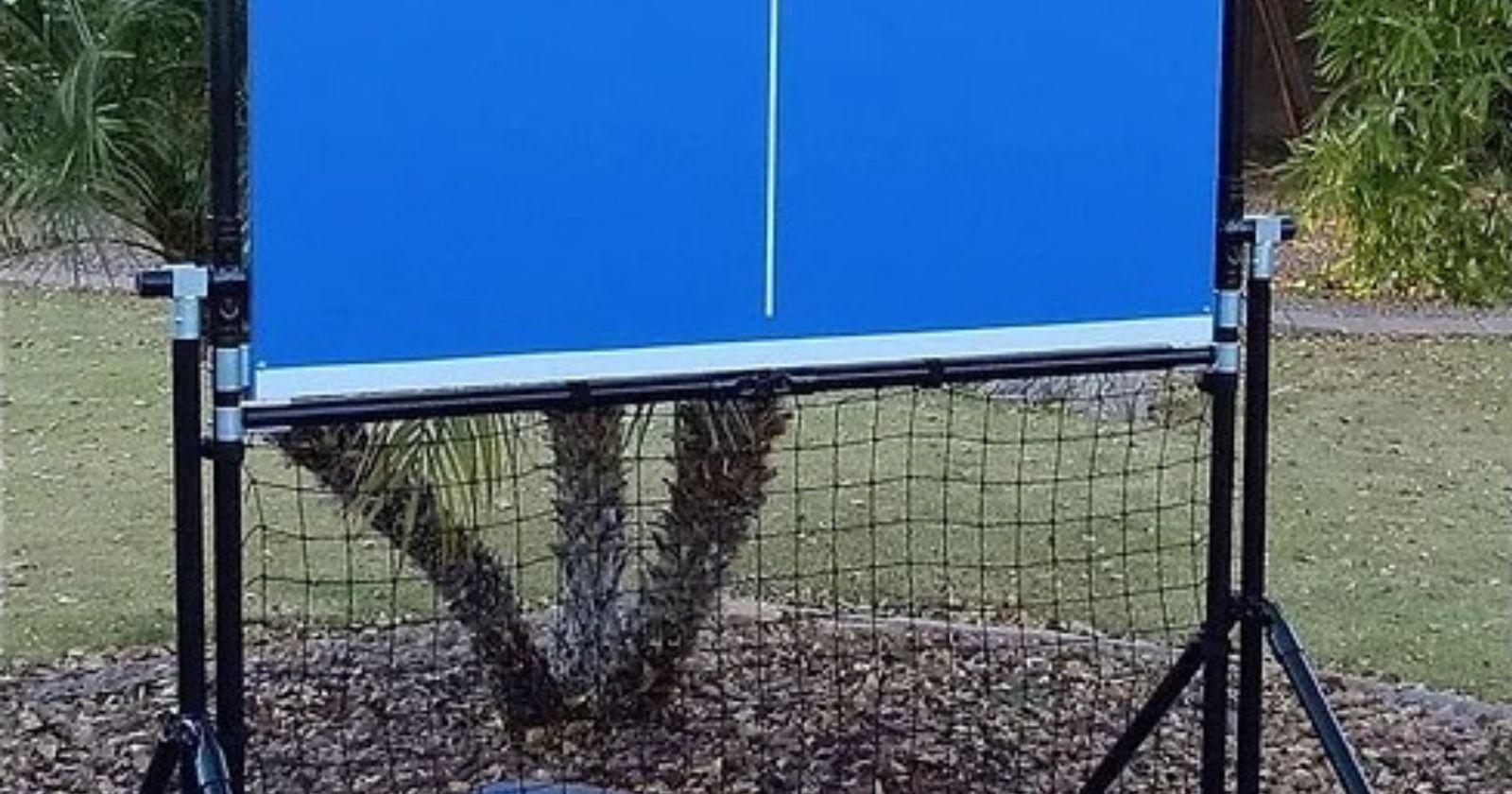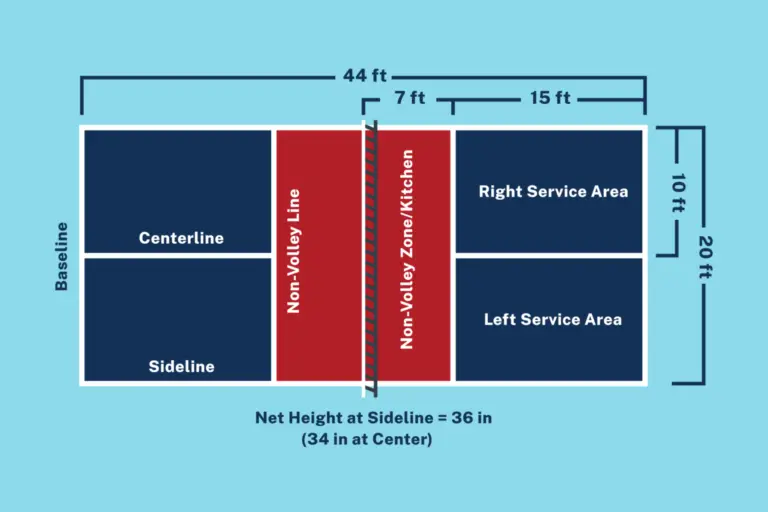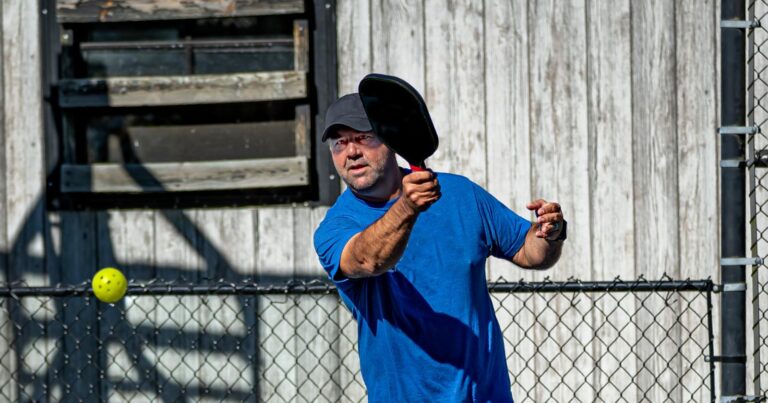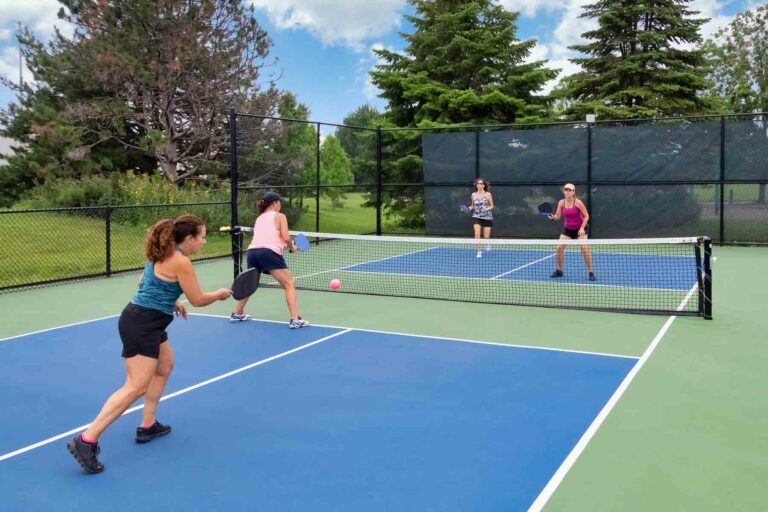How to build a pickleball backboard?
How to build a pickleball backboard? Constructing your pickleball backboard is a rewarding venture that involves several key steps. Begin by gathering the essential materials, including a 4×8 feet plywood sheet, a saw, sandpaper, outdoor paint, screws, a drill, a bungee cord, and weather-resistant. With these items in hand, the first step is to carefully cut the plywood sheet to your preferred dimensions, commonly 4×4 feet. Afterward, smooth out the edges and surface of the plywood using sandpaper to ensure a safe and polished finish. Choose a high-visibility outdoor paint, such as bright green or blue, and apply it to the plywood surface, allowing it to dry thoroughly.
Next, position the bungee cord diagonally across the backboard and secure it with screws. Adjust the tension of the bungee cord based on your skill level and the desired intensity of practice. This cord will create a rebound effect, replicating real-game scenarios for a more dynamic training experience. Subsequently, using a drill, mount the backboard onto a sturdy support structure, whether it’s an existing wall, fence, or a custom-built frame. It’s crucial to ensure the backboard is securely fastened to prevent any instability during play.
To safeguard your creation from the elements, apply a weather-resistant sealant. This step is crucial if your practice area is outdoors, as it enhances the longevity of your pickleball backboard. As an optional but beneficial addition, consider marking lines on the backboard to simulate the dimensions of a pickleball court. This can be achieved using tape or paint, providing a visual guide for practicing shots with increased precision. With these steps completed, your DIY pickleball backboard is ready for action, offering a reliable and customizable practice partner to elevate your pickleball game.
Read more: HOW LONG IS A PICKLEBALL COURT – EXPERT ANALYSIS (2024)
Materials You Will Need
Before investigating the construction process, gather the necessary materials. You’ll need a 4×8 feet plywood sheet, a saw, sandpaper, outdoor paint, screws, a drill, and a bungee cord.

- Selecting the proper plywood is crucial for the durability of your pickleball backboard. Opt for a 4×8 feet sheet with a thickness of at least ½ inch. The plywood should be sturdy enough to withstand the impact of pickleballs without warping.
- Using a saw, carefully cut the plywood sheet to your desired dimensions. A standard size for a pickleball backboard is 4×4 feet. Once cut, use sandpaper to smooth the edges and surface of the plywood. This ensures a safe and comfortable playing experience.
- Position the bungee cord diagonally across the backboard, securing it with screws. This will create a rebound effect, simulating the unpredictability of an opponent’s shots. Adjust the tension of the bungee cord based on your skill level and desired practice intensity.
- Apply outdoor paint to the plywood surface. Choose a color that provides good visibility for the pickleball. A high-contrast color, such as bright green or blue, works well. Allow the paint to dry completely before moving on to the next step.
- Using a drill, attach the backboard to a sturdy support structure. This could be an existing wall, fence, or a custom-built frame. Ensure the backboard is securely fastened to prevent any wobbling during play.
- Apply a weather-resistant sealant to protect your pickleball backboard from the elements. This step is crucial, especially if your practice area is outdoors. A sealed backboard will last longer and maintain its playing surface quality. Consider adding line markings to simulate the dimensions of a pickleball court. This will help you practice your shots with increased precision. You can use tape or paint for this purpose.
Aim of Pickleball Backboard
The primary goal of a pickleball backboard is to provide players with a consistent and reliable practice surface, enhancing their skills, accuracy, and overall performance in the game. Here are the key objectives or aims of incorporating a pickleball backboard into your training regions:
- A pickleball backboard allows players to practice and refine their shots independently. It serves as a training partner, helping players develop and enhance their forehand and backhand strokes, volleys, and serves.
- Unlike practicing with a human partner, a backboard provides a consistent and predictable rebound, allowing players to focus on specific aspects of their game without interruptions. This consistency is essential for mastering different shot techniques.
- The rebound effect created by a bungee cord on the backboard helps players improve their shot accuracy and precision. Players can experiment with different angles and shot types, gaining a better understanding of ball trajectories and improving their overall control of the court.
- A pickleball backboard enables players to engage in solo practice sessions, which is particularly beneficial when a practice partner is not available. This self-directed practice allows players to work on weaknesses, reinforce strengths, and build confidence in their game.
- By adding line markings to the backboard, players can simulate the dimensions of a pickleball court. This helps players develop a better sense of court positioning, spatial awareness, and shot placement, making their practice sessions more game-like.
- Engaging in repetitive shots against the backboard contributes to physical conditioning and stamina building. It allows players to focus on their footwork, agility, and endurance while honing their pickleball skills.
- With a pickleball backboard, players can optimize their training time. There’s no need to wait for a practice partner, making it a convenient and time-efficient solution for dedicated skill improvement.
FAQS about How to build a pickleball backboard?
Why is a pickleball backboard beneficial for practice?
A pickleball backboard provides a consistent and reliable practice surface, allowing players to hone their skills independently. It’s precious for solo practice sessions, offering controlled rebounds for various shots.
Can I customize the dimensions of the pickleball backboard?
Absolutely. While a standard size is 4×4 feet, you can customize the dimensions based on your preference and available space. Just ensure the backboard remains stable and securely mounted.
What type of plywood is suitable for building a pickleball backboard?
Opt for a sturdy plywood sheet with a minimum thickness of ½ inch. This ensures durability and longevity, with smooth edges for a safe playing experience.
Is the bungee cord necessary, and how do I adjust its tension?
The bungee cord is beneficial for creating a rebound effect. Adjust its tension based on your skill level and desired practice intensity. Experiment with tension until you find a setting that suits your needs.
Can I build a pickleball backboard for indoor use?
Indeed, the construction process remains essentially the same for indoor use. However, consider using materials that complement your indoor environment and are suitable for the chosen mounting surface.
How do I protect the pickleball backboard from the weather?
Applying a weather-resistant sealant is crucial for outdoor use. Ensure complete coverage to protect the plywood from rain, sunlight, and other environmental factors, prolonging the backboard’s lifespan.
Are there specific paint color recommendations for better visibility?
Choose high-visibility outdoor paint in bright colors like green or blue. This enhances visibility during practice, making it easier to track the ball’s movement.
Can I store the pickleball backboard when it is not in use?
Depending on your mounting setup, it might be possible to dismantle and store the backboard. Ensure the reassembly process maintains stability for safe and effective use.
How can I incorporate court markings on the pickleball backboard?
Use tape or paint to add line markings, simulating the dimensions of a pickleball court. This optional addition helps improve shot accuracy and court awareness during practice.
Is building a pickleball backboard suitable for beginners?
Yes, the construction process is beginner-friendly and can be a great introduction to DIY projects. Follow the steps carefully, and you’ll have a customized pickleball backboard ready for practice.








One Comment
Comments are closed.